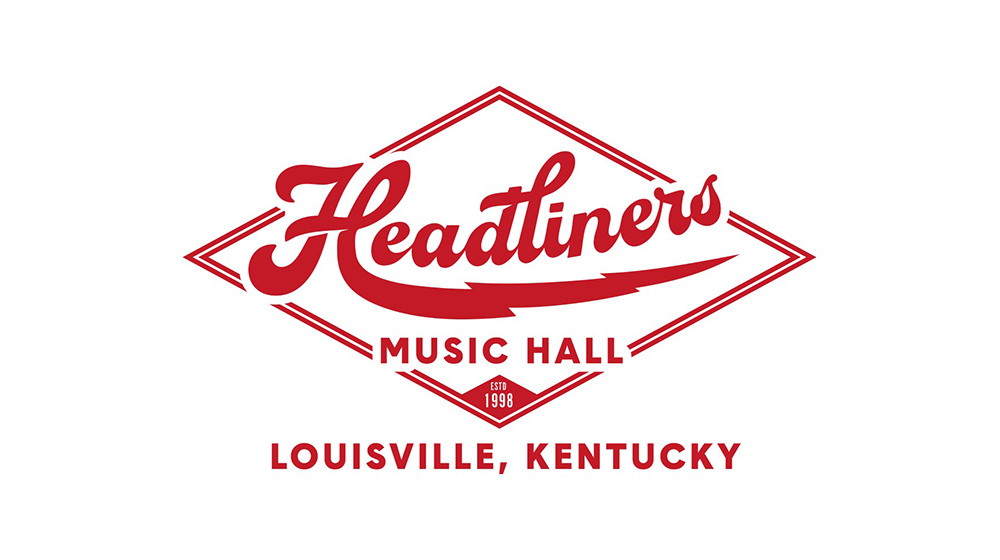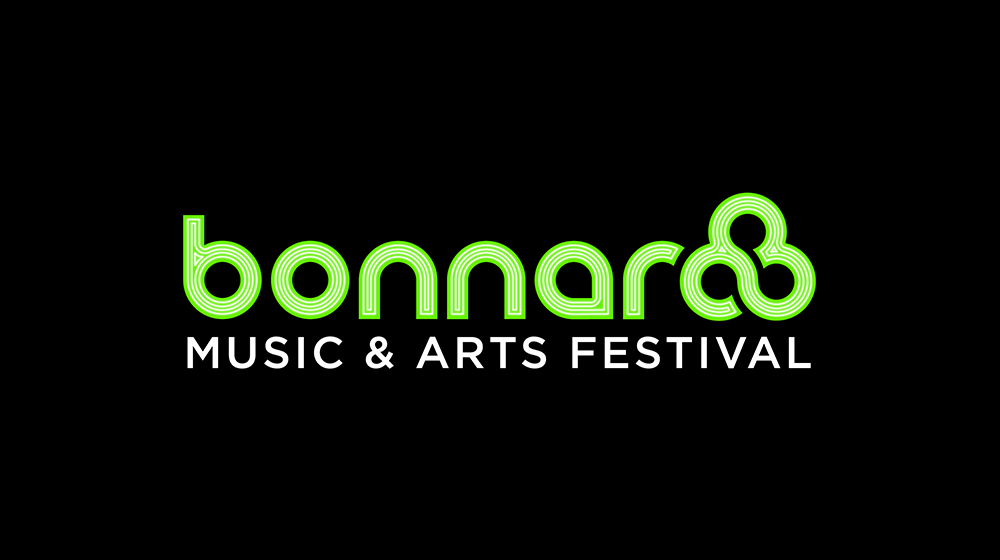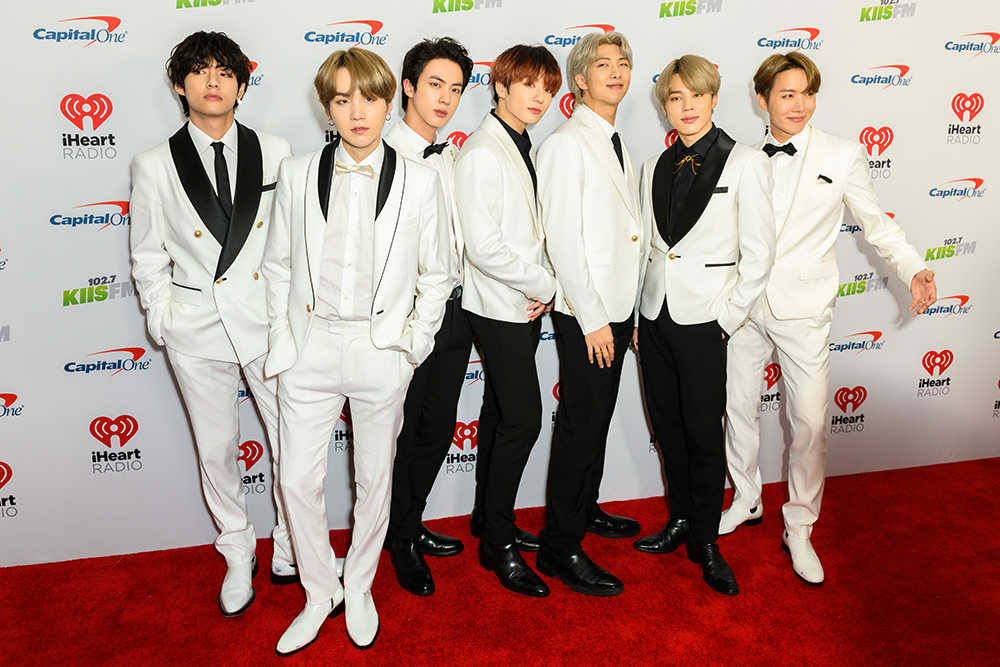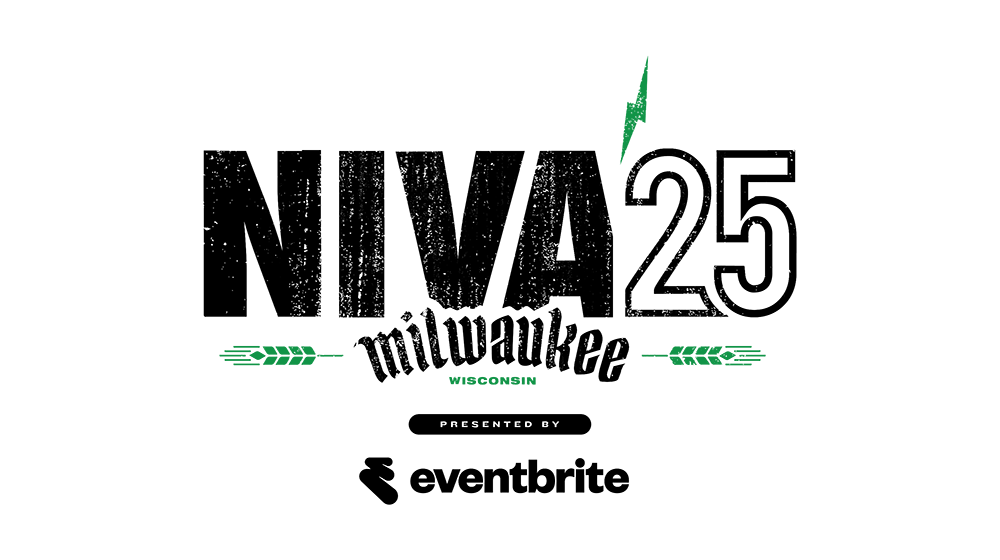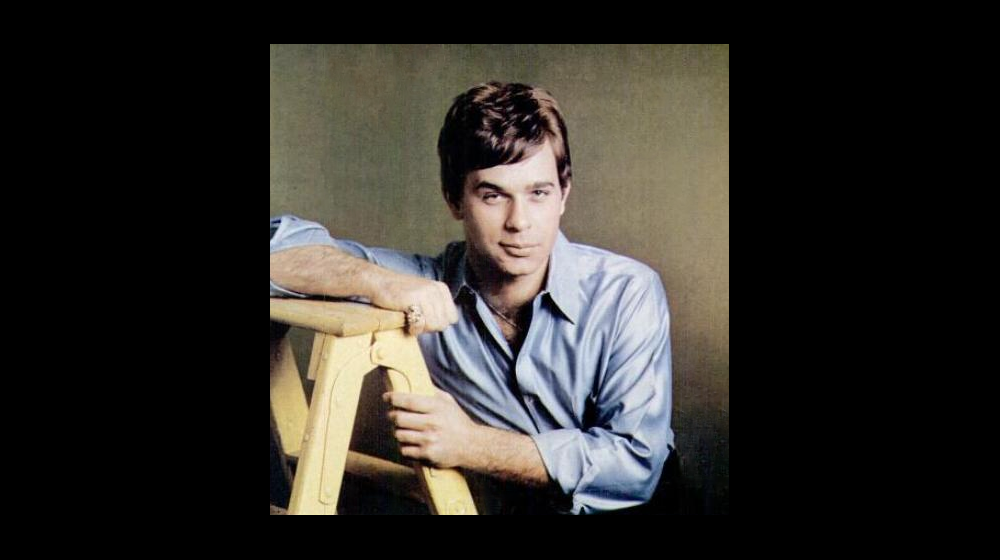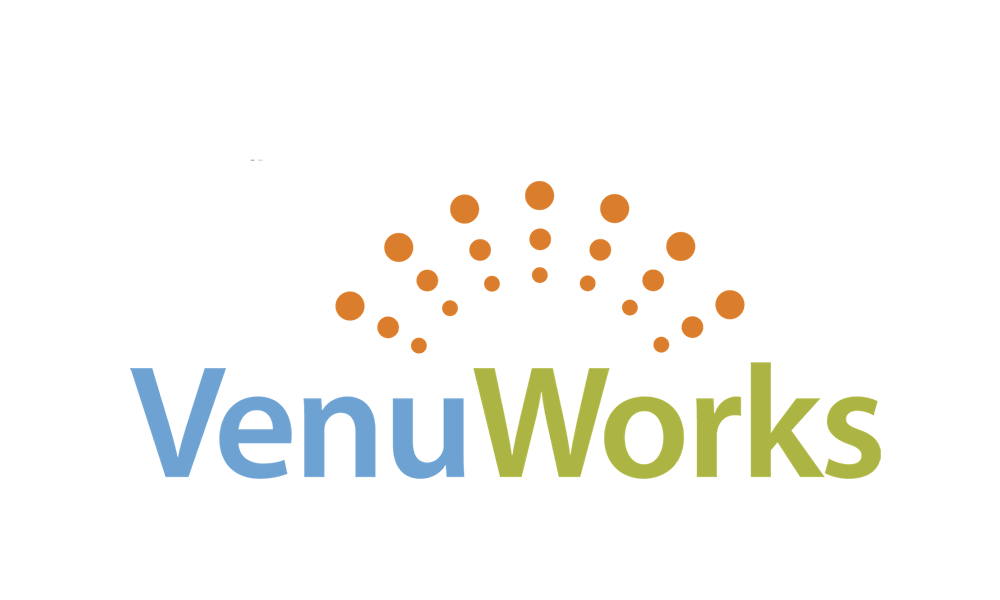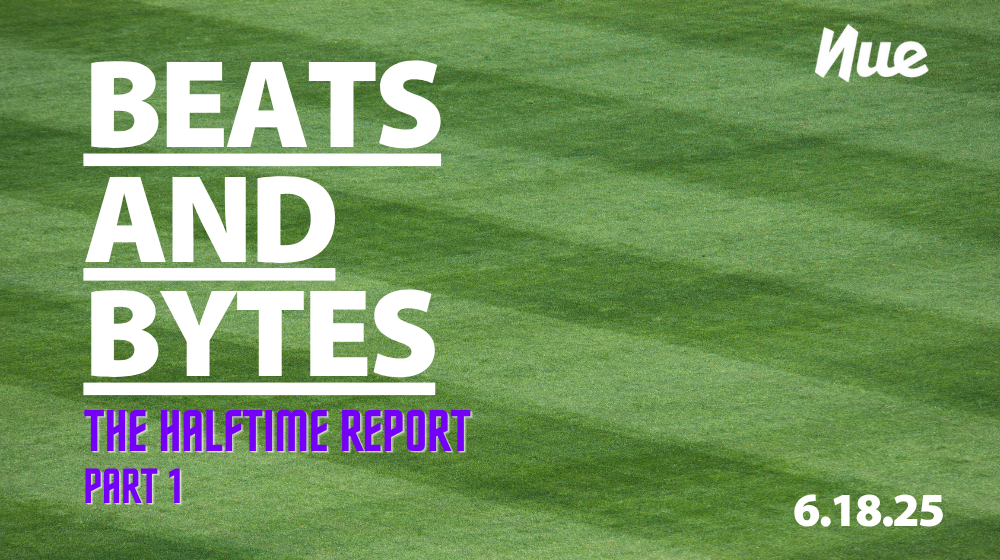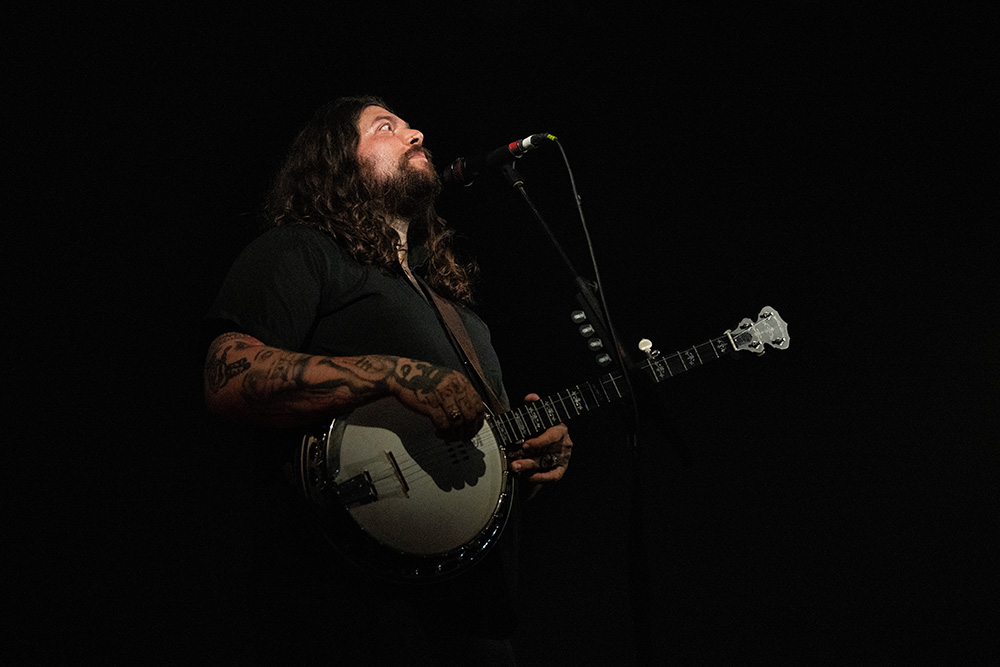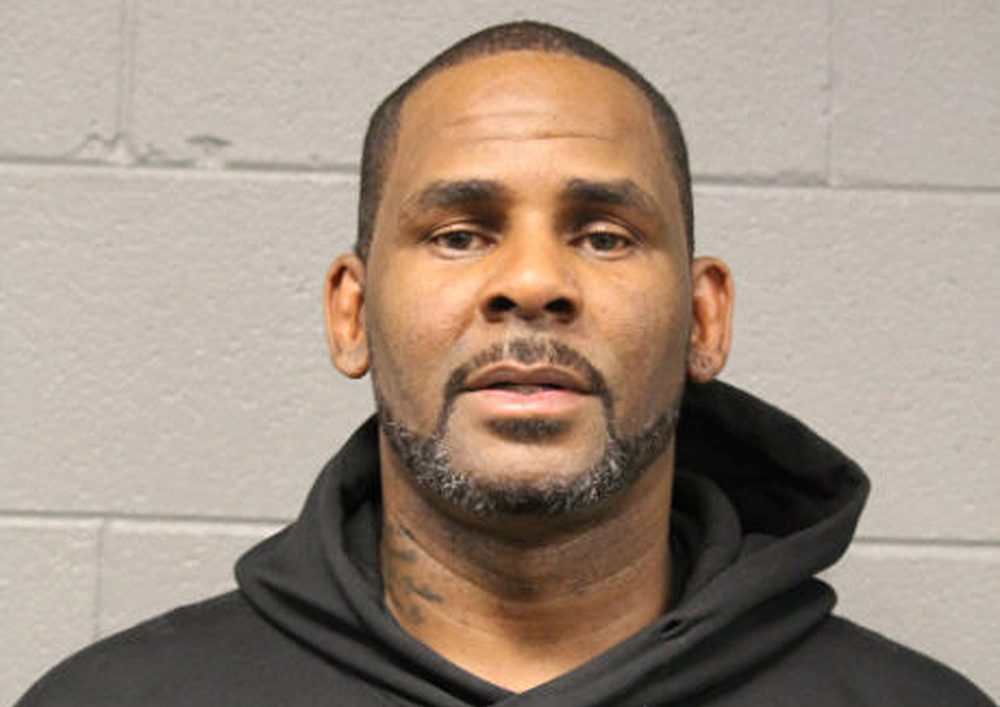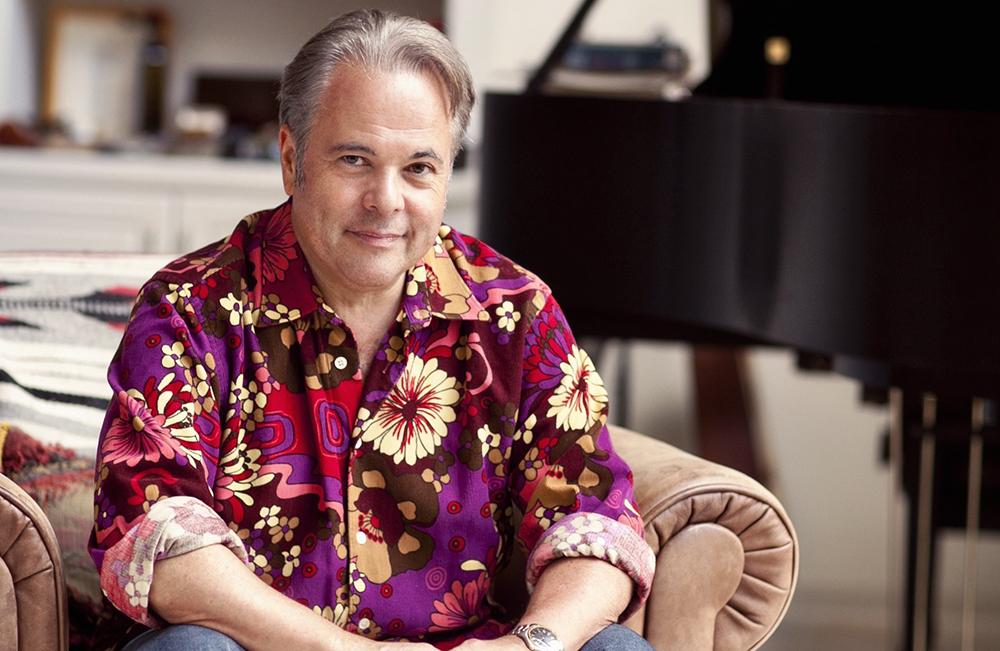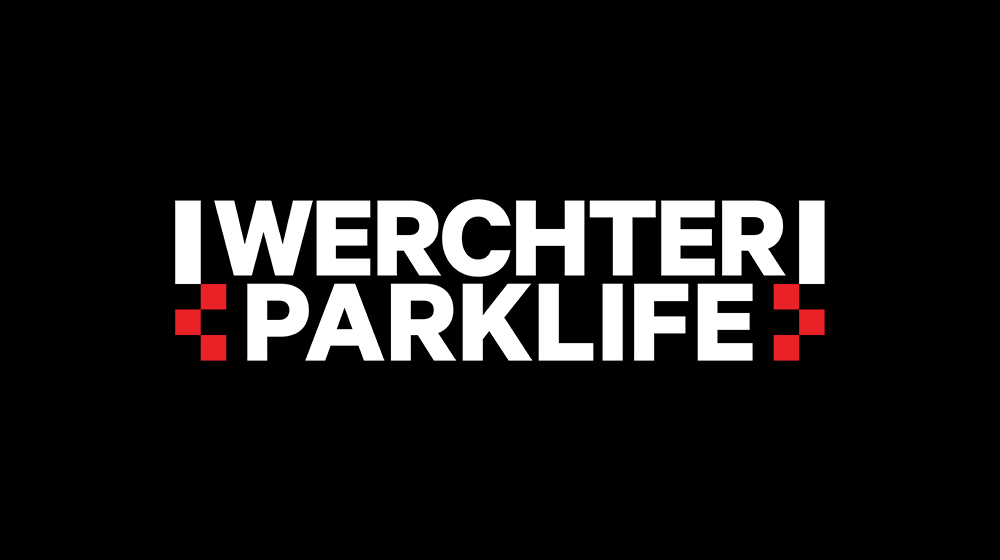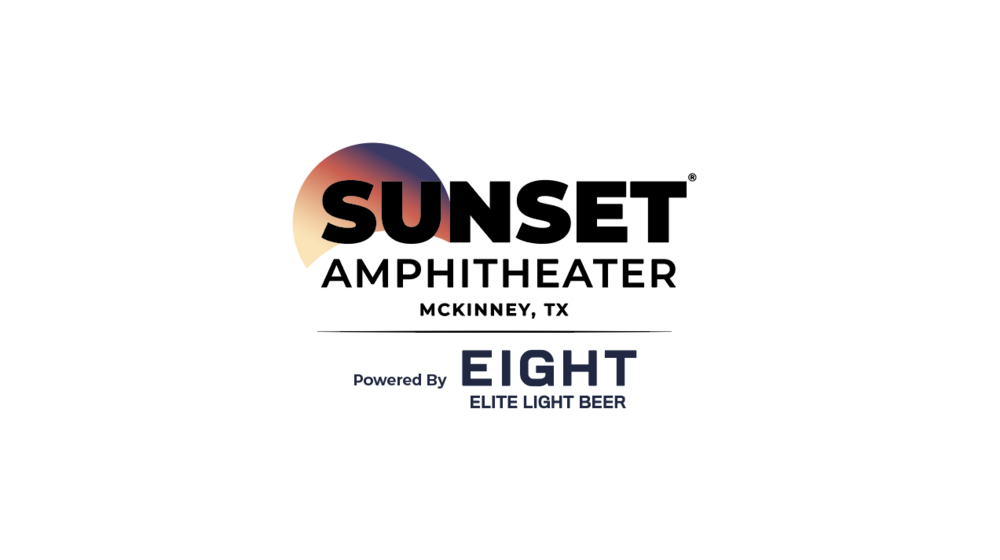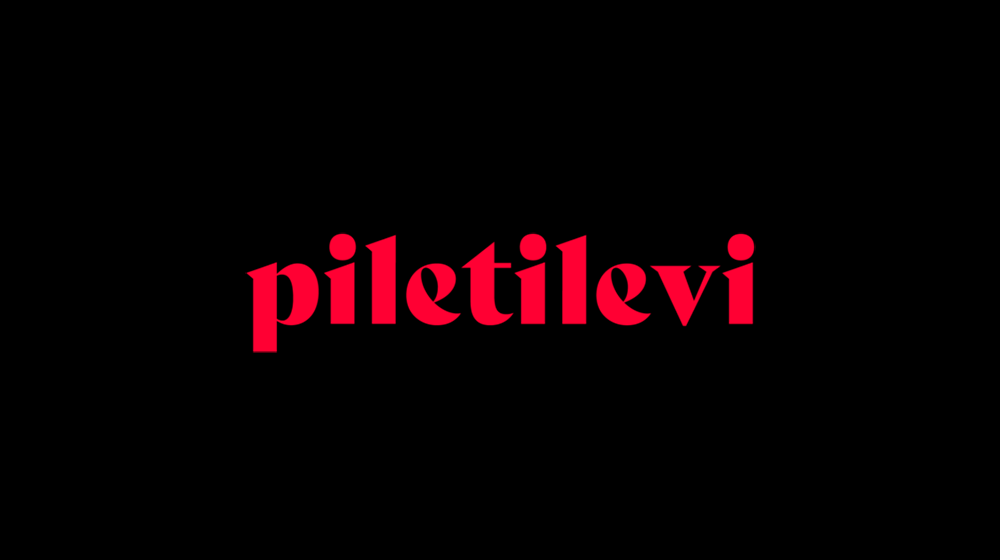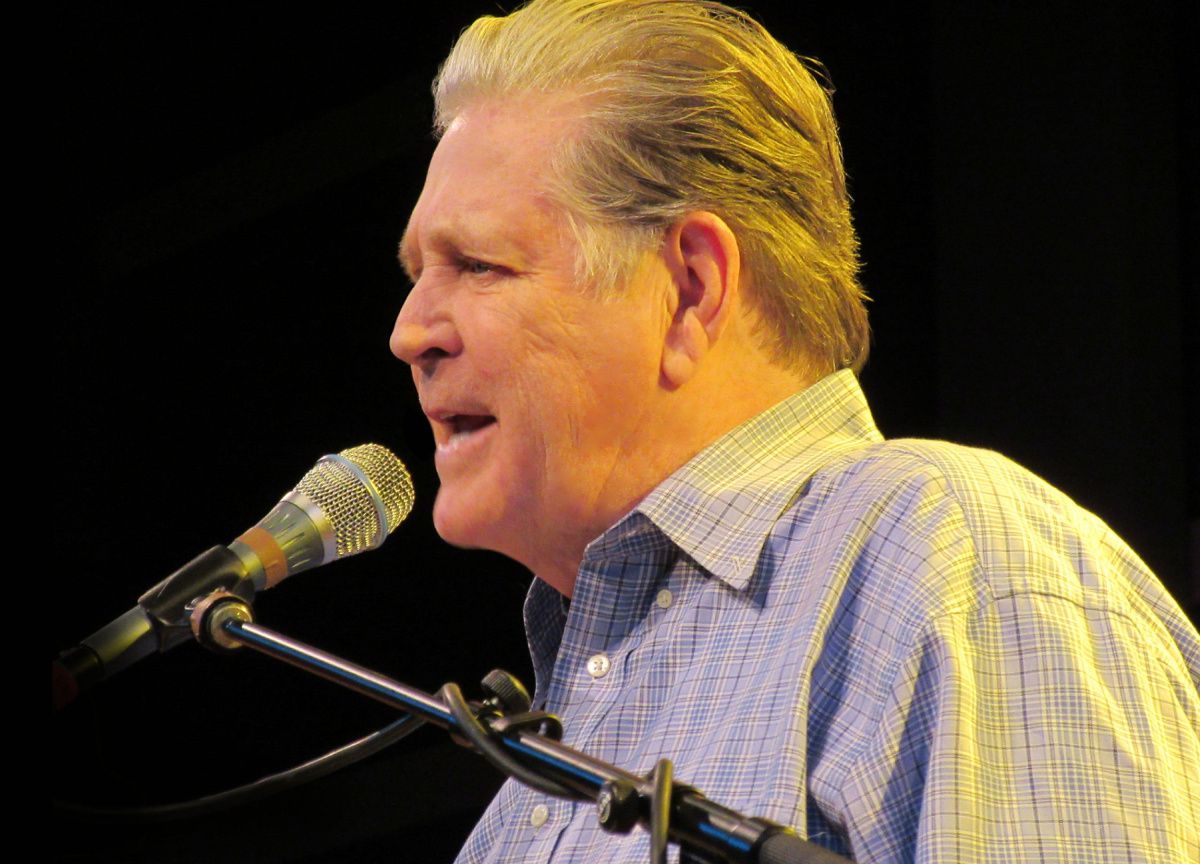This week In the Hot Seat with Larry LeBlanc: Marilyn Laverty, founder, and president, Shore Fire Media.
Marilyn Laverty is an amazing woman who has led an amazing life.
Over an extensive career on both sides of the media game—as a journalist, and as an eloquent public relations advocator, working at major labels, and on her own—and with unwavering faith in her clients’ talents, and their ideals, Laverty has helped change the face of American music publicity.
She can, of course, take credit for making PR work for her clients. But, in doing so, she made possible her own career, and the careers of a staff of 30 spread out in Shore Fire Media offices in Brooklyn, Nashville, and Los Angeles.
For Laverty, the core of her work is trying to figure out who clients are, and who they can be.
Shore Fire’s reputation in entertainment, and its relationships with its blue chip talent roster, meticulously shaped by Laverty, and her team of senior publicists and publicity directors with specific areas of expertise—including working iconic and promising up-and-comers– is simply unparalleled.
As part of Dolphin Entertainment since December 2019, Shore Fire Media works closely within the entertainment, marketing, and content development company headed by its founder/president/CEO Bill O’Dowd as both a stand-alone entity as well with Dolphin’s two entertainment PR firms, 42West, and the Door; with Viewpoint Creative, the branding and production agency; and with Be Social, the digital influencer marketing firm; in order to provide strategic full-service publicity and creative branding services.
Shore Fire Media’s most notable music clients include Bruce Springsteen, Elvis Costello, Carole King, Judy Collins, Bon Iver, Cyndi Lauper, Kesha, Maxwell, John Fogerty, Kylie Minogue, Pat Metheny, Marcus Roberts, Margo Price, Evanescence, Common, ODESZA, Todd Rundgren, Aly & AJ, Jacob Collier. Sarah Jarosz. Ted Hearne, Rhiannon Giddens, Esperanza Spalding, Merry Clayton, and Louisiana singer Willie Jones who is now breaking down barriers while pursuing a career in the country genre.
Also under Shore Fire’s client domain are PJ Morton, Jim Gaffigan, Natalie Bergman, Jay Shetty, Tim Minchin, Common, Masego, Oliver Tree, Shungudzo, Bree Runway, Vijay Iyer, Subtronics, REZZ, Big Wild, Terri Lyne Carrington and Social Science, Lido Pimienta, Steep Canyon Rangers, Trixie Mattel. K Flay, Bright Light Bright Light, VanJess, Raphael Saddiq, Erick the Architect, and Your Old Droog.
Among its industry and diverse services portfolios are the hi-res streaming site Qobuz as well as NTWRK, Lyte, Mandolin, Royalty Exchange, Secretly Group, Downtown Music Publishing, Premier Music Group, Big Yellow Dog Music, Freakanomics Radio, The Art Students League of New York, Comedy Dynamics, Dr. Mike, The East Family, the Grammy Music Education Coalition, The Louis Armstrong Museum, Brooklyn Bowl, Summerfest, Smithsonian Folkways, Malaco Records, and the North Carolina Arts Council.
Laverty was well-known within America’s music world prior to opening Shore Fire Media three decades ago. She had worked as a freelancer for American and British music magazines, including Record Mirror, Trouser Press, Crawdaddy, and New York Rocker, before becoming VP of Publicity at Columbia Records; moving on to RCA Records as a publicity manager; and then returning to Columbia Records (later renamed Sony Music, and CBS Records) for a high-profile11-year stint as VP of publicity, heading a staff of 10 in Los Angeles, and New York.
A graduate in philosophy from Cornell University, Laverty started her career as an editorial assistant at the Gannett newspaper, the Ithaca Journal.
Shore Fire Media has endured an eventful time of late. Let’s start with discussing its acquisition by the entertainment, marketing, and content development company Dolphin Entertainment in December 2019.
I’m delighted with Shore Fire being part of the Dolphin group with (president/CEO/founder) Bill O’Dowd as the leader. Bill is a very positive and dynamic individual. Very resourceful. And he asks each of the companies how he can best help them with their growth.
When people sell companies, they often do so because It represents a safe haven from hostile outside threats. Or they need deeper pockets to evolve their business. Certainly, this acquisition has enabled you to expand your staff, and it has created increased opportunities both within the entertainment sphere, as well as in other sectors. Was that your intent?
For me, it was realizing that Shore Fire would be stronger and more competitive, and that there would be more opportunities for our staff to grow as part of a larger company than on our own. That it would also give us a competitive advantage.
Shore Fire Media has since worked alongside Dolphin’s two entertainment industry PR firms — 42West, and The Door; with Viewpoint Creative, its Boston-based full-service, creative branding, and production boutique agency; and more recently, with its digital influencer marketing firm, Be Social.
As a result, Shore Fire Media is today better positioned to execute strong marketing campaigns, cross-sell services, and to support a full spectrum of entertainment content.
We were thinking a bit about the advantages of being part of Dolphin. In addition to Bill O’Dowd’s dynamic approach, and positivity, and growth-oriented focus, being part of a very closely-knit group of companies that have these different areas of expertise is a great strength for us. For example, If you are talking about influencers, Be Social is one of the top digital agencies in L.A., both with influencers and with brands as clients. For a company such as ours to have access to a company like that is tremendous.
(Launched in 2012 by Ali Grant, Be Social represents both brands and digital influencers. The Los Angeles-based company has executed multiple campaigns for beauty, fashion, and lifestyle brands, including H&M, Nordstrom, and Disney.)
We are putting focus on more projects that the Dolphin companies can go in on together. So when a client is looking for something that touches on film or theatre areas, such as 42 West; or on food and hospitality, such as The Door; or with digital influencers like with Be Social; or if they need top-notch graphics or film or a cutting edge press conference, we can put them in touch with Viewpoint Creative which is the film and video company that is part of the Dolphin family.
There is so much white noise out there in the digital world and clients need to cut through that white noise with diverse tools.
This is a time when it’s great to be able to access as many experts as possible. Shore Fire has a great staff of 30 in three different cities; ranging from staff that has been with the company, almost from the beginning to extremely talented staff that have joined us in the past couple of years. They (publicists) are building their own rosters. The ability that we bring as a staff of 30 to share information, and to overcome challenges in this fast-paced time–especially with the challenges of the past year—and, especially with there being so many media outlets, and so many important trendsetters emerging all of the time, It is far more effective keeping up with this week’s trend when there are more people feeding into the conversation.

So Dolphin Entertainment provides Shore Fire with not only greater PR clout in the entertainment space, but also access to non-music sectors?
Yes, and that’s an advantage that really enables each of us to be successful because there are so many changes, so much information to process. Being a larger company, where there are closer to 200 staff, gives us quick and easy access to answers about what are the best business practices of today.
A full-service approach also enables you to better compete in a tougher, more competitive world today. To be able to evaluate the diverse opportunities open to your clients; whether they be in touring, or in content creation, publishing, social media, or film and TV work.
It is very important that each of our individual companies have a different identity, and a different area of expertise. We are not looking at becoming one company. There is a certain amount of competition among the companies. We don’t have completely exclusive areas. We have different personalities, but we share a lot of objectives, and we talk about best (business) practices, best PR practices that benefit all of the companies. We share a lot of tips with the staff across the companies. We have really talented staff of all ages.
Obviously, there’s day-to-day communication traffic between Dolphin Entertainment’s entities. Do you also have regular conference calls or sessions to discuss what you each are working on?
We have a lot of different networks for sharing information ranging from monthly, all-company sessions, called Lunch and Learn, to a newsletter that goes to all of the companies; and there are regular weekly calls of the company heads.
Shore Fire works with each of the Dolphin companies to fashion a combined strategy for clients?
Right. It is mostly synergistic. There’s a lot of good feeling, and there’s a lot of daily interaction even though we are separate companies. There’s been a lot of great conversations. In a time when media and PR are changing faster than ever, to be able to have open conversations within a company on a national class level–who are the best at what they do–is a great benefit to our staff, and to our clients.
One of the most recent joint Dolphin projects concerns the Eurovision Song Contest–the longest-running annual international televised music competition–partnering with Ben Silverman’s Propagate Content to debut the first-ever American Song Contest during this year’s holiday season. Artists and bands from each of the 50 states, and across every musical genre, will perform original songs on a live televised event.
Yes, the creators of the Eurovision Song Contest have committed to a gigantic equivalent in the United States called the American Song Contest.
(As a lead up to the live televised competition, Propagate Content and The American Song Contest producing team will create The American Song Contest Academy, a group consisting of music professionals based in the U.S. that represent all genres, and backgrounds. These members will create juries of artists, and music industry notables who, along with the regional audiences, will select talent to compete.)
42 West generated the initial American Song Contest press release.
That initiative is going to be across the board with all of the Dolphin companies involved. In addition to helping each other with best practices, we are also creating projects that employ, maybe, two Dolphin companies at a time. We are putting together projects where it’s Shore Fire, and The Door; or Shore Fire, and 42 West. But aside from that, on an even bigger level, there are Dolphin projects that come in through Bill O’Dowd. Everybody, the film company, the digital company, everybody is going to work on those.
The American Song Contest is a massive undertaking.
It is planned to be on the level of the Eurovision Song Contest, and you know how massive that is, as most Americans do. This takes years to roll out. First, they will announce the TV partners, and then there will be contests all across the United States. It’s going to be massive.
We all love Will Ferrell’s 2020 American musical comedy, “Eurovision Song Contest: The Story of Fire Saga.”
We do.
In December 2019, Allison Elbl returned to Shore Fire after two decades to head up the Los Angeles office; and Jennifer Valentin came in as a senior account executive.
We were thrilled with Allison returning to the company. We were thrilled with Jennifer joining the company.
(Prior to re-joining Shore Fire, Allison Elbl had been senior VP at ID PR, where she established its music department, and implemented campaigns for such clients as James Taylor, Paul Simon, Sam Hunt, Steve Martin, Bette Midler, Diana Krall, Sarah McLachlan, Lang Lang, Andrea Bocelli, the Dave Matthews Band, and film composer A.R. Rahman, among others. She also worked with such brands as Converse, Starbucks, Live Nation, and musical.ly (now TikTok).
At VP Records for three years, Jennifer Valentin led publicity campaigns for Estelle, Busy Signal, Jah Cure, Beres Hammond, Christopher Martin, Romain Virgo and others.)
You have a greater range of clients than any other public relations firm I know.
Thank you for recognizing that. It’s been important to us to really reach into so many entertainment-related areas. We have clients. We have apps. We have streaming platforms. We have a ticket marketplace, and venues, and music publishers, and it’s great because working with these types of companies requires a different skillset in many cases than working on an album campaign. But the skills are complementary.
There are so many potential areas for growth for Shore Fire, right now.
We have always been quite broad. Most of my experience was at Columbia Records at a time which you could say was the heyday of record companies. When all of the major labels represented the full gamut of musical genres from country to classical to R&B. It was all there under one roof. Our goal at Shore Fire has always been to represent great artists in every genre, and in every generation, there’s a lot of great artists
It is entirely one thing overseeing PR for a national headlining tour and overseeing the launch of an album, and overseeing PR on a week-long summer festival like Summer Fest which draws nearly 900,000 people to Milwaukee’s 75-acre Henry W. Maier Festival Park annually. Each demands a different skill set, although some expertise is interchangeable
Do you bring different members of your staff together to address individual projects?
We do gather the team members based on the need of the project. But the staff are really eclectic in their skills. Each of the teams represents a number of different kinds of clients. And each of the teams is interested in the music businesses as well. Our senior VP Mark Satlof handles a lot of music business companies like Mandolin, QObuz, and Downtown Music Publishing. We are also working with NTWRK. Are you familiar with that?
Yes, NTWRK is the video commerce platform specifically for Gen Z and Millennials. The platform, which features daily exclusive product drops, live videos, and social distribution, has received investments from Live Nation, Foot Locker, and Main Street Advisors.
Right. I think the interest in these kinds of clients is great in the media, and among our staff.
Meanwhile, I don’t think a week goes by that I don’t get either an inquiry or pitch from Shore Fire. Often, I get a pitch, and I think, “That’s really cool. Yes, let’s do it.” At the same time, I might also think about a pitch with a corporate client, “Why have they hired a PR company?” Are you often approached by executives seeking a greater media presence?
Definitely, executives do look for professional advice on how to develop their media spotlight. Usually, we are working with executives who have led businesses more than individuals within larger companies.
Executives at smaller companies are often seeking to expand their own personal brand.
I recommend to every executive who wants to grow their own brand, and their own business, to think about what their profile should be. What message that they want to send, and how they want to send it. Not everybody needs to participate in a traditional press campaign. But it is important for them to establish values or foster a brand in some way; whether it is through their socials or through leadership on certain issues; to provide a narrative about who they are, what kind of work that they do, and what they believe in.
Decades ago, there was a uniform template to boost artists’ careers or to focus on specific individual projects. It was mostly garnering AM or FM radio support along with seeking coverage in pivotal music media outlets including Rolling Stone, Creem, Crawdaddy, Circus, Trouser Press, New York Rocker, and Fusion in the United States; and Melody Maker, New Musical Express, Sounds, Record Mirror, Disc, and Music Echo, ZigZag, and later Uncut, and Q in the UK.
Today, structuring a media strategy is à la carte with highly impactful and highly-nuanced print, broadcast, digital, social media, and influencer aspects.
At one point, there were a dozen or two dozen media outlets that were the decision-makers. Now there are hundreds of media. There is no such thing as a standard campaign. That is what makes our business so interesting because each campaign is really carefully crafted around the personalities, and the values, the associations, the activities, and the music. Things that are very personalized.
Do you target social media influencers or work with influencers–digital talents and creators–who, due to providing mentions, reviews, and recommendations on the internet, have grown in breadth and popularity?
Shore Fire is now representing digital talent because they are talent in themselves, and they are frequently looking to traditional PR as a way to help them to achieve their career goals. Ranging from the medical doctor, Dr. Mike to athletes like The East Family (entrepreneurs and creators Shawn Johnson East and Andrew East), we are representing a number of non-musician talent now, and quite a few of them fall into the digital creative range.
(With over 9 million social media subscribers, Dr. Mikhail Varshavski, commonly known as “Doctor Mike,” is a multifaceted, board-certified family medicine physician, media personality, educator, writer, and philanthropist.)
Do you pitch for new clients?
Building our roster is part of our every day activity. We are always reaching out to friends that we have worked with recently, and to new people that we would like to work with. One of the really vibrant things about the company, and a point I want to make about what Shore Fire is in 2021, is that there are at least 10 publicists at Shore Fire who are developing and building their own rosters based on their own area of expertise, and interests at Shore Fire.We want each of our staff to be able to grow. We are fortunate that we have a lot of staff who have grown from junior publicists to team leaders. and to senior publicists. We want to enable each of the staff to really develop their own rosters.
So the answer is yes, we are always, in a way, pursuing business. We are fortunate that many great opportunities are presented to us because of our experience, and because of the relationships that we have. But we are always interested in that artist that is going to break through this year whose team is not famous yet; whose team is not the same team that already has maybe 10 established artists. We love breaking new artists and working with teams who are about to break their first artist.
You are renowned for being hands-on with Shore Fire’s roster and closely following the progress of accounts. You are, I know, on copy for most of the correspondence over the entire roster.
How did you get beyond those media contacts, clients, and potential clients calling the office saying, “I want to talk to only Marilyn?” Well, Marilyn isn’t available. There’s someone else here that you can talk to. “No, no I must talk to Marilyn.” You have overcome all of that because you delegate responsibility. Many executives never learn to do that.
It must have been a good sense of intuition first that told me not to name the company after myself. It’s a great compliment that you think all of the clients want to talk to me, but our staff handle our artists very well without me being involved all of the time.
The company is blessed to have senior vice-presidents who have been with the company for several decades, and who are truly respected in the business. Matt Hanks curates a great roster including Bon Iver, Jacob Collier to Margo Price; Mark Satlof handles Elvis Costello and Carole King and a lot of business projects; Rebecca Shapiro’s roster combines both icons such as Kylie Minogue, institutions such as the Art Students League, The Louis Armstrong Museum, and buzzy newcomers like Oliver Tree, plus comedy/children’s music, and festivals and NTWRK.
Each of them knows the company so well that they can handle all of their business and do a great job with their own rosters, and their staff. There are staff that have just been with the company for a couple of years who are already beginning to build their own rosters. This also is a result of the way that the industry has expanded. When Shore Fire started, there were far fewer artists recording than there are now.
How long have you exclusively worked with Bruce Springsteen?
I’ve been representing him since “The River” (1980) which is a while ago.
Is true that Shore Fire started with just one client, Bruce Springsteen?
Actually two. Bruce and Wynton Marsalis, who was the first, which is pretty good.
You brought both over after working with them at Columbia Records?
Right. I was Bruce’s publicist at the label for the entire time that I was there. I had worked with Bruce and (co-managers) Jon Landau and Barbara Carr for most of my time at the label. That was a big connection. When I found out that Bruce would be an independent client that persuaded me that it was the right time to leave a company that I loved after 12 years there. (Renowned trumpeter and composer) Wynton Marsalis was the same. Shore Fire worked with him probably for a decade until the Jazz at Lincoln Center program became established and they had their own PR.
You and Barbara Carr share a long history.
I was very fortunate to meet Barbara during my first year in New York. We started working together while I was at RCA. She was working with Tommy Mottola at Champion Entertainment. Then, around the same time I returned to Columbia Records, Barbara started working with Jon Landau in managing Bruce.
So Shore Fire was busy from day one. Who were some of the early clients?
Mariah Carey was one of the early clients. The Scottish band Deacon Blue was another. Other early clients include Mazzy Starr and Jesus Jones.
Quite a range of clients even then.
We have always tried to be really eclectic. So the list of artists that we worked with is pretty tremendous.
Let me take you back in time.
I will try.
You were at Kenny Chesney’s show at Philadelphia’s Financial Field in 2011 when your cell phone buzzed. The look on your face, according to someone there, said it all. Clarence Clemons, the legendary saxophonist in the E Street Band– known affectionately to fans and friends as the Big Man– was gone at age 69. He died June 18th in a Palm Beach hospital of complications from a massive stroke that he had suffered 6 days earlier at his Florida home.
Clarence was unquestionably the linchpin of the E Street Band. He played on countless Springsteen songs since 1971, including “Born To Run,” “Thunder Road,” “Jungleland,” “Dancing In The Dark,” “Badlands” and “The Promised Land.” He is the only member of the band on the cover of the “Born To Run” album with Bruce
(“He always lifted me up,” Bruce Springsteen said in 1999. “Way, way, way up. Together we told a story of the possibilities of friendship, a story older than the ones that I was writing and a story I could have told without him at my side.”)
Wow. Now how do you know that? Were you there? Who else was there that evening?
Billboard’s then executive director Ray Waddell wrote about your moment of discovery in his Upfront column (July 2, 2011)
Yeah, I remember.
Earlier, there was the loss of founding E Street Band keyboard player Danny Federici on April 17, 2008. The day before Danny died of melanoma at New York’s Sloan-Kettering hospital, and the full band had gathered around his bed to say goodbye.
(Danny Federici left his mark on dozens of classic Springsteen songs – from the boardwalk-style accordion on “4th of July, Asbury Park (Sandy),” and his organ solo on
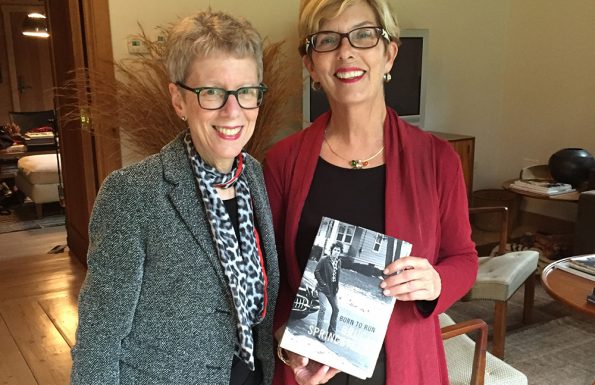
“Hungry Heart” through his haunting coda to “You’re Missing.”
“Danny was the glue that held the E Street Band together,” E Street Band drummer Max Weinberg said. “He was an unrestrained personality that created a wildness in the music. We used to call it the special sauce of the E Street Band.”)
The death of Danny, and then Clarence likely had a profound effect on Bruce and those around him. It was always clear how much joy Bruce derived from playing with that line-up. Meanwhile, afterward, in each case, you dealt with the media as a publicist. Journalists and broadcasters insist on fiercely covering such life moments. For many, the passing of Danny, and Clarence represented a loss of rock and roll innocence.
Well, Bruce is always straight up, I think, in addressing the forces that govern our lives Certainly his new album (“Letter To You”) is so poignant in depicting his sense of loss, but also that tremendous fire to go on, and to embrace what we do have.
With the title track “Letter to You,” in which Bruce makes a forthright promise to keep the faith with himself and his audience: “Dug deep in my soul and signed my name true,” he sings. “And sent it in a letter to you.”
When you are talking about loss and aging and maturing, I would like to add that one of the most gratifying things about working with some of the artists that we work with—the artists who have already become icons—is seeing how tremendously vital, dynamic, and forward-thinking they are. It is very inspiring to be around people who are not content to stay where they are. Bruce Springsteen is a great example, Also, Elvis Costello is completely brilliant in his approach to recording. Elvis is a genius, and his ideas are a mile a minute. He’s tremendous.
How about the two-decade twists and turns of Cyndi Lauper’s career? Her talent, idiosyncrasies, and plucky, radiant image is stronger than ever today. She isn’t primarily a singer nor a songwriter nor an actress, but a cultural presence.
“Kinky Boots,” the Broadway musical with music and lyrics by Cyndi and book by Harvey Fierstein, was Cyndi’s first outing as a Broadway songwriter. It swept the Tony Awards in 2013 with 11 nominations, and 6 wins, and she became the first woman to win a Tony alone in the score category. Her next Broadway project is “Working Girl,” an adaptation of the 1988 film of the same name.
I was going to mention her. She’s a current client. Cyndi has not only had a very successful musical but, as you say, she’s working on another musical. Her activism (co-founding the charity organization True Colors United) accomplishes great good in the world. As a result, whenever I am around her and younger artists, they gravitate toward her because what she represents today is so strong. It is a great experience to be inspired by artists such as her, and then by the rosters that other great publicists are bringing in. For example, we are working with great talents like Jacob Collier.
Shore Fire’s roster pulled in 15 nominations for the 2021 Grammy Awards with multiple nominations for Jacob, Ted Hearne, and Sarah Jarosz. Jacob’s album, “Djesse Vol. 3” earned a Grammy nomination for Album of the Year, and he clocked additional nominations in the R&B Performance, and Best Arrangement, Instrumentals, and Vocals categories.
We have been blessed with a lot of success with Best New Artist nominations over the years with Black Pumas, St. Vincent, and Bon Iver as well. We have the unique honor of working with artists who are already icons and, at the same time, getting all of the inspiration and the excitement from artists who are breaking through, and who are becoming the icons of the future because I think that our staff is very diverse in terms of age, and musical taste. Again we are very fortunate to have some very well-known names, the types of artists that are in the Rock & Roll Hall of Fame, but the excitement comes from new ideas, and from the artists who will be the candidates for the Rock Hall in the future.
Let’s talk about the Connie Mack Stadium, formerly Shibe Park, and your love of the Philadelphia Phillies.
(Laughing)
When it opened on April 12, 1909, Shibe Park became baseball’s first steel-and-concrete stadium. The field had emerald green grass. And there were incredible great sightlines there. The exterior was more a European cathedral than a ballpark.
Right. That was my first experience as a baseball fan.
You first went with your father to a game where the Phillies lost to the Milwaukee Braves in 1964, during the Phillies’ 13-game losing streak.
I went with my dad. it was in the middle of one of the most historic losing streaks in baseball history. The Phillies have had a couple of those. I think that loss was 4 or 5 games into the 13 game losing streak. That was my first experience. But I remember it. How can you not be knocked out by the vibrancy of a baseball park? The excitement? One of my first career goals was to be a baseball announcer.
There was a famous longtime radio and TV color broadcaster who was one of the most beloved sports figures in Philadelphia history.
Richie Ashburn.
Yes, he was one of the famous “Whiz Kids” of the 1950 Phillies. A centerfielder. As a broadcaster, he worked alongside Bill Campbell, Byrum Saam, and Harry Kalas over the years.
I still continued as a baseball fan although my first experience at the park was so dispiriting.
Babe Ruth got his first hit as a Yankee at Shibe Park in 1920. A year later he hit a blast to deep left-center that cleared the then-single bleacher stand, went across the street, and hit a tree over 500 feet away. In 1930, Ruth hit a ball to right field over the 12-foot wall that landed in Opal Street, the alley behind the second row of houses, again over a 500 feet distance, and said to be the longest ever home run hit at Shibe Park.
It had a great sense of history.
(Philadelphia Athletics owner Benjamin Franklin Shibe built Shibe Park in the early 1900s to capitalize on the growing popularity of his American League franchise. He chose a location at 20th Street and Lehigh Avenue in North Philadelphia. Shibe Park opened on April 12, 1909. The stadium was damaged by fire in 1971, and was demolished in 1976.)
I still remember being a couple of arm’s lengths from (left-handed pitcher) Warren Spahn. His biography was one of the few books on baseball in the school library. I read the book (“Warren Spahn: A Biography of the Legendary Lefty” by Lew Freedman), and it was so exciting. It was probably my first experience of a superstar. I don’t know if you would call them a rock star of baseball. It was probably my first experience of a star or a celebrity up-close.
(With 363 victories, Warren Spahn is the most winning left-handed pitcher in baseball history. Over 21 seasons, he won 20 or more games 13 times, started 665 games, completed 382, struck out 2,583 batters, and finished with a 3.09 ERA. A 17-time All-Star, he was also a war hero, serving in World War II, and was awarded the Purple Heart. There is an award given out in his honor, the Spahn Award, which goes annually to the best left-handed pitcher in each league.
As a baseball fan, you were attracted to several celebrity baseball players, right fielders Roberto Clemente, and Johnny Allison, and left-handed pitcher Bo Belinsky.
When I look back on my fondness for certain baseball players, I realize that part of it had to do with whether they were cute, and not just their playing abilities.
You collected baseball cards?
Yes.
The 1960s was a great era for baseball cards. There were 5 different World Series winners, as well the Yankees dominated the first half of the decade, but that all changed in 1965 as a new generation of players took over from the old guard. At the start of the 1960s, Topps baseball cards hit the market with a new design concept featuring horizontal layouts, split-pane look, dual player images, and player names where every other letter alternated in color.
Do you still have the cards?
I do have them. If any of your readers are card collectors, I’d like to hear from them. I saved my cards meticulously. Even though I was mostly interested in the Phillies I did save the cards from the Dodgers, the Yankees, and other teams that I didn’t like as well.
In any pack of cards sold, you would likely have Dodgers or Yankee player cards before finding a Phillies player card.
Right. But I heard from a lot of people in the business lamenting the loss of their baseball card collections. Usually, a parent got rid of it.
My mother threw my cards out
Sorry for the loss of your collection. For some reason, mine made it, and a few years ago my mom handed it to me. I was just going through it recently, and remembering my first experience at the stadium, and remembering my obsession with stats, and all of that sort of thing.
Are you from Philly?
From South Jersey. Those of us from that area really regarded ourselves as being from the Philly area. I think that a lot of people also think of New Jersey as a suburb of New York.
Would you have gone to shows at the Electric Factory?
Yes, I did as a high school student.
And at the venerable Philadelphia Spectrum, one of the venues that established American arena rock?
Yes.
And Tower Theatre?
The Tower Theatre was an incredible place to see concerts. I saw Bruce Springsteen there many times. And Roxy Music and, of course, local favorites like the Hooters. I loved that theatre.
Philadelphia was usually the first outside play for New York-based bands.
I think that Philadelphia and Cleveland shared a lot. Such die-hard music towns where the fans had a real sense of their own communities, and really did contribute to the building of a lot of big careers.
In Cleveland, there was powerhouse WMMS-FM with music director Kid Leo who boosted the careers of Bruce Springsteen, Rush, Mott the Hoople, John Mellencamp, Pat Benatar, Roxy Music, Cyndi Lauper, the Pretenders, New York Dolls, and Southside Johnny). Kid Leo went on to a great career at Columbia Records involved with campaigns that broke Alice In Chains, Shawn Colvin, and Train. Prior to Kid Leo, Donna Halper was WMMS-FM’s music director and broke Rush and Bachman Turner Overdrive out of Canada.
In the Philadelphia market, we did hear Bruce Springsteen. Ed Sciaky played him. We heard him on WMMR. I don’t know if we would have heard him on WDAS. That was (then) a more progressive radio station.
(WMMR legend Ed Sciaky is the rock jock most often given credit as being Bruce Springsteen’s biggest booster. Bruce gives props to Ed Sciaky In his book, “Born To Run,” but also remembers the main man as being WMMR deejay David Dye, now the host of World Cafe, the WXPN syndicated show.)
The first time I heard “Born To Run” I distinctly remember hearing Ed Sciaky play it on WMMR after a Tower Theatre concert.
How good of a singer were you to be in the Cornell Chorus?
(Laughing) You didn’t have to be awfully good to be in the Cornell Chorus, thank you. But I can say that I did perform on the stages of Carnegie Hall, and The Kennedy Center.
How cool is that?
It is cool. It is more impressive if you don’t know that I was part of a group of 100 singers and that we were singing a piece of 20th Century serious choral music which meant that even if I was out of tune no one would know.
A graduate in philosophy from Cornell University in Ithaca, New York?
Philosophy is a great major.
Philosophy is the study of the nature of existence, knowledge, truth, and ethics. It would have honed your ability to reason effectively, and form coherent arguments; to write persuasively; and would have improved your logical and critical thinking for a job in teaching, law, banking, the civil service, business, science, advertising, politics, communications and, of course, PR. What did you expect to do in life?
Well look, I was fortunate to grow up in an era when the focus (of education) was on liberal arts. It was an era where there was more exploration of ideas. I was fortunate because I was able to have a pretty liberal arts education. In my senior year, I took a magazine writing course and a typing course because I had some extra credits. Those two courses got my career for me.
You were also at WVBR, the student-owned and volunteer-run college radio station.
Right. I wasn’t an on-air talent. WVBR was a very vibrant station. I met people there who started a new student newspaper in town and those leaders ended up starting other major companies ranging from the W Hotels to Rockbill and numerous publications. They were the people who were in charge of WVBR.
Following graduation, there was no room for you to go back to live with your family because, being the oldest of 6 kids, your bedroom had been taken over. Clearly you were on my own. As a result, you started your career as an editorial assistant at the Gannett newspaper The Ithaca Journal.
Right, and it (the job) was based on having one article printed in a girl scout magazine, and making $100. The staff that were there at that time ended up going to the Atlanta Journal, the Washington Post, and The New Yorker. So to some extent, we control where our careers take us, but we also find ourselves in these settings where there is some magical connection from the people that we meet. There’s a lot about our careers that we design ourself but part of what we are going to achieve is a result of the places that we find ourselves in, and the people we get to meet.
You later freelanced for American and British music publications before you became a publicist.
When I first moved to New York City and I was aspiring to be a rock writer I worked for Record Mirror, the British publication, and also for the legendary Trouser Press
Among the music journalists you met when you moved to New York was Alan Betrock.
Alan and I were married for 12 years (from 1980 to 1992) There’s no one who was more influential to me in my first years in New York than Alan. In addition to founding New York Rocker (in 1976), he was a great record producer, early Blondie, the Cosmopolitans, Smithereens, Richard Hell, and the Voidoids, Marshall Crenshaw, and dB’s.
Alan also worked as the east coast editor for Bomp! magazine. Through his own Shake Books imprint, he published books on teenage exploitation films, rock and scandal magazines, and the history of the pinup. His 1982 book, “Girl Groups: The Story of a Sound,” resulted in a 1983 documentary film.
Alan was a brilliant and generous person, and a great trendsetter.
(Alan Betrock died of cancer in 2000 at the age 49.)
This was an era of such newly-launched rock publications as Rolling Stone, Cream, Crawdaddy, Fusion, Trouser Press, New York Rocker, Circus, and Sniffin’ Glue; and it was the era legendary American rock music scribes, including not only Alan, but also Lester Bangs, Richard Meltzer, Robert Christgau, Dave Marsh, Nick Tosches, Greil Marcus, John Mendelssohn, Robert Palmer, Lenny Kaye, David Fricke, Gina Arnold, Bud Scoppa, Dave DiMartino, Jon Tiven, Toby Goldstein, Michael Lydon, Dave Marsh, Billy Altman, John Morthland, Ben Edmonds, Ed Ward, Deborah Frost, Chuck Eddy, Richard Meltzer, Nick Tosches, Greil Marcus, Jaan Uhelszki, Susan Whitall, Jon Landau, and Patti Smith.
You weren’t able to add your name to the list.
I realized that I wasn’t going to a legendary rock writer. One of my first friends, when I moved to New York, was Lester Bangs. I was fortunate that he introduced me to a lot of the crème de la creme of music writers.
I remember his flat near Union Square in New York City.
542 6th Avenue
Where almost everything was on the floor.
I remember metal shelves full of records, and I recall a period when there was a lot of leaking of the ceiling and there were plastic tarps over the records. Yes, it was quite a place.
A great period to be involved in music in America.
I’d say the time around the CBGB’s era in New York, and the tremendous brilliance of Creem magazine in Detroit, that period was really a wonderful era for rock journalism. Being among writers like Lester Bangs, and going to CBGB’s and meeting up with critics like James Woolcott (then with The Village Voice), it didn’t take too long for me to realize that if I was going to make more of a contribution it’d be through publicity.
When I first moved to New York I got a job as an assistant at Columbia Records. I did a year there. and then went to RCA and then back to Columbia. I thought that that was going to become a rock writer. But the more I got to know about publicity, the more that I understood that it was a great opportunity to use my philological bent, and my interests in conversation, dialogue, in the sharing of ideas, and bringing people together; and that it also served my interest in supporting music, and being a fan. And that I could achieve a lot more as a publicist than as a journalist.
Has your background as a journalist been helpful to you as a publicist?
Absolutely. By having been a journalist, I have a great respect for the process. I know how difficult it is. And I think that one of Shore Fire’s most important attributes is respecting journalists, and trying to do everything in our power to get their job done. It is important to understand what it’s like to be a journalist. To get an assignment, to complete an article. To respect all of that.
I think it is more important than ever to really understand what the publication or media outlet is about, and what the journalist is about because, as we discussed, now there are so many different types of media, and they each have a specific approach. A publicist needs to know how to target each of them, based on exactly what their type of coverage, and audience is.
Larry LeBlanc is widely recognized as one of the leading music industry journalists in the world. Before joining CelebrityAccess in 2008 as senior editor, he was the Canadian bureau chief of Billboard from 1991-2007 and Canadian editor of Record World from 1970-80. He was also a co-founder of the late Canadian music trade, The Record.
He has been quoted on music industry issues in hundreds of publications including Time, Forbes, and the London Times. He is a co-author of the book “Music From Far And Wide,” and a Lifetime Member of the Songwriters Hall of Fame.
He is the recipient of the 2013 Walt Grealis Special Achievement Award, recognizing individuals who have made an impact on the Canadian music industry.




















